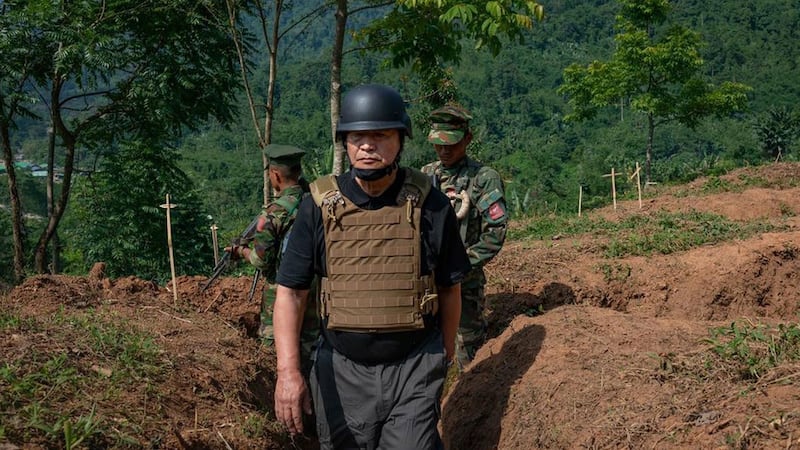Two years after Myanmar’s National Unity Government called for armed rebellion against the leaders of a coup, anti-junta forces are well-organized and making gains against the country’s military, the head of the shadow administration said Thursday.
The claims by NUG President Duwa Lashi La suggest a substantial improvement in effectiveness by Peoples’ Defense Force, or PDF, paramilitaries, who began their fight against the junta on Sept. 7, 2021, as a scattered group of poorly equipped local units.
"We started with handmade guns to defend our villages, but now, we are able to form strategic and well-organized regiments and battalions armed with automatic rifles that can fight back against the military junta,” said the NUG leader.
“We can now use attack drones to effectively fight the military junta troops,” he said.
He said the rebel fighters could even threaten the capital, Naypyidaw.
In a statement to mark the second anniversary of the resistance to the military’s Feb. 1, 2021, takeover, the NUG Ministry of Defense said that anti-junta forces are in the midst of a “pre-offensive” against the regime.
After uniting nearly 300 PDF battalions in more than 250 townships across the country in the first year of the rebellion, the NUG ministry said it was able to “open additional fronts” against the military in its second year, gaining control of new territory in Sagaing and Magway regions, as well as Chin, Kayah and Kayin states.
Maung Maung Swe, a spokesman for the NUG Ministry of Defense, said that PDF groups had killed 26,194 junta troops and wounded 10,804 others in 9,900 battles over the past two years. He acknowledged that there had been PDF casualties, but did not disclose the exact number.
‘Baseless’ claims
But Thein Tun Oo, the executive director of the Thayninga Institute for Strategic Studies, made up of former military officers, dismissed the NUG's claims as “baseless.”
"In terms of security, they may be active in some areas that the military cannot completely control, but what is certain is that they have not been successful enough to control certain regions, as they say,” said the think tank director.
“Additionally, their claim to have killed nearly 30,000 military personnel is just propaganda,” he said. “I think they just want to announce that they are winning, regardless of what is actually happening on the ground."

Attempts by RFA Burmese to contact junta Deputy Information Minister Major Gen. Zaw Min Tun for comment on the NUG’s claims went unanswered Thursday.
At a July 31 meeting of the National Defense and Security Council, junta chief Senior Gen. Min Aung Hlaing confirmed that his soldiers have been killed in PDF attacks, although he did not provide details. He noted that fighting was underway in Sagaing, Magway, Bago and Tanintharyi regions, as well as Kayin, Kayah, Chin and Mon states.
Reliance on air power
The Burmese military has faced challenges in situations where it does not enjoy an asymmetric advantage, said Mimi Winn Byrd, a Burmese-American retired lieutenant colonel in the U.S. Army and current military analyst at the Asia-Pacific Center for Security Studies in Hawaii.
"The junta has suffered more casualties in [nearly] every battle in Myanmar, compared with the revolutionary forces,” she said. “That's why the junta has to use more air power and airplanes, because they no longer win ground battles. If you keep track of these situations, you can say that the revolution is making a lot of progress.”
Military analyst Hla Kyaw Zaw suggested that the resistance is still too fractured to achieve victory, but acknowledged the progress it had made over the past two years.
“If the entire revolution can be solidified under one leadership to operate in proper balance, rather than fragmented without a strong leadership, the [resistance] will win sooner or later," he said.
According to the NUG, fighting is taking place in every one of Myanmar’s 14 states and regions except Yangon and Irrawaddy regions, where the resistance regularly carries out targeted bombings.
The United Nations Office for the Coordination of Humanitarian Affairs says that more than 1.6 million people have fled fighting in Myanmar since the military coup. In addition to the more than 300,000 who fled conflict before the takeover, there are currently nearly two million internally displaced people across the country.
Translated by Myo Min Aung. Edited by Joshua Lipes and Malcolm Foster.
